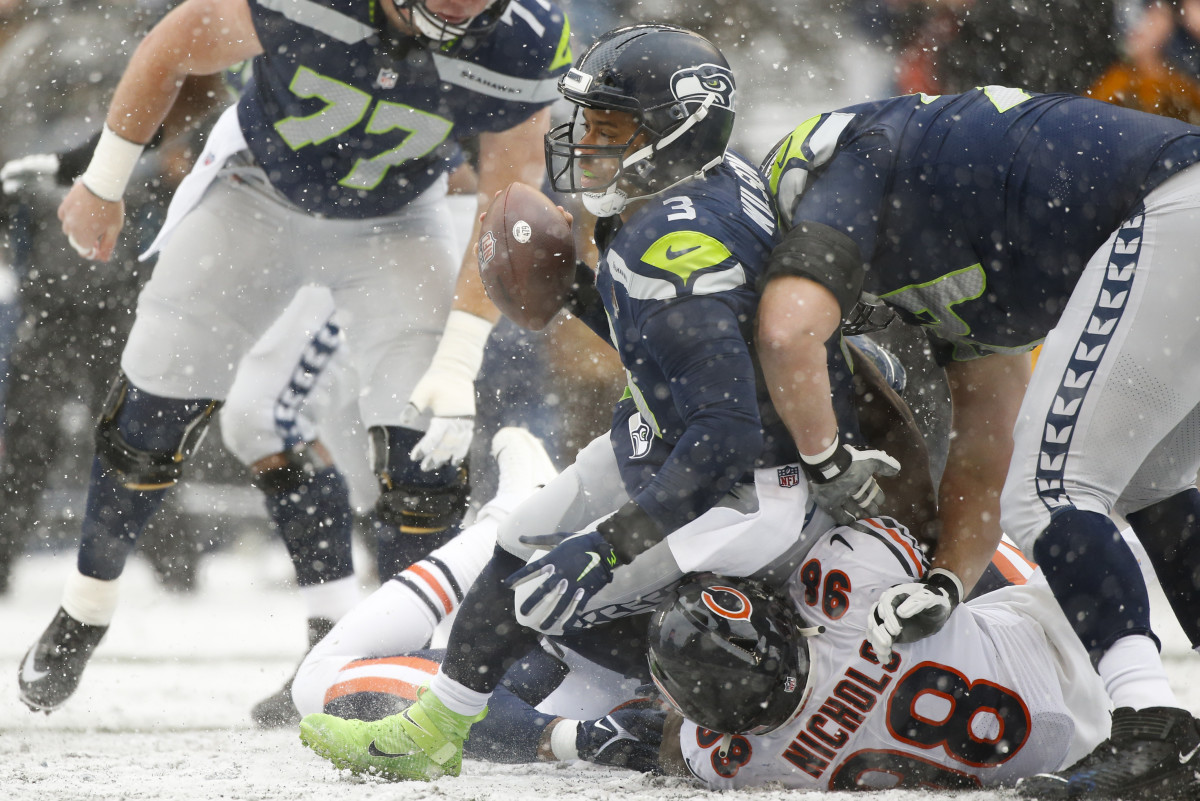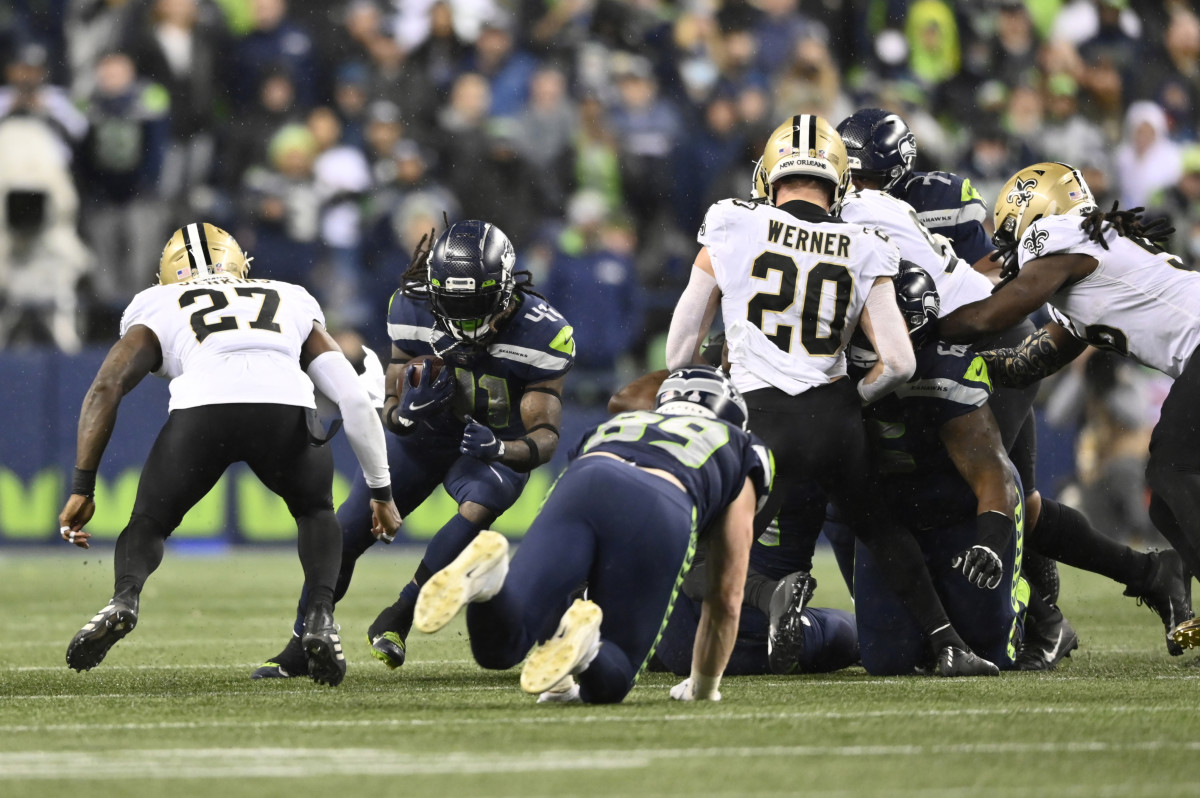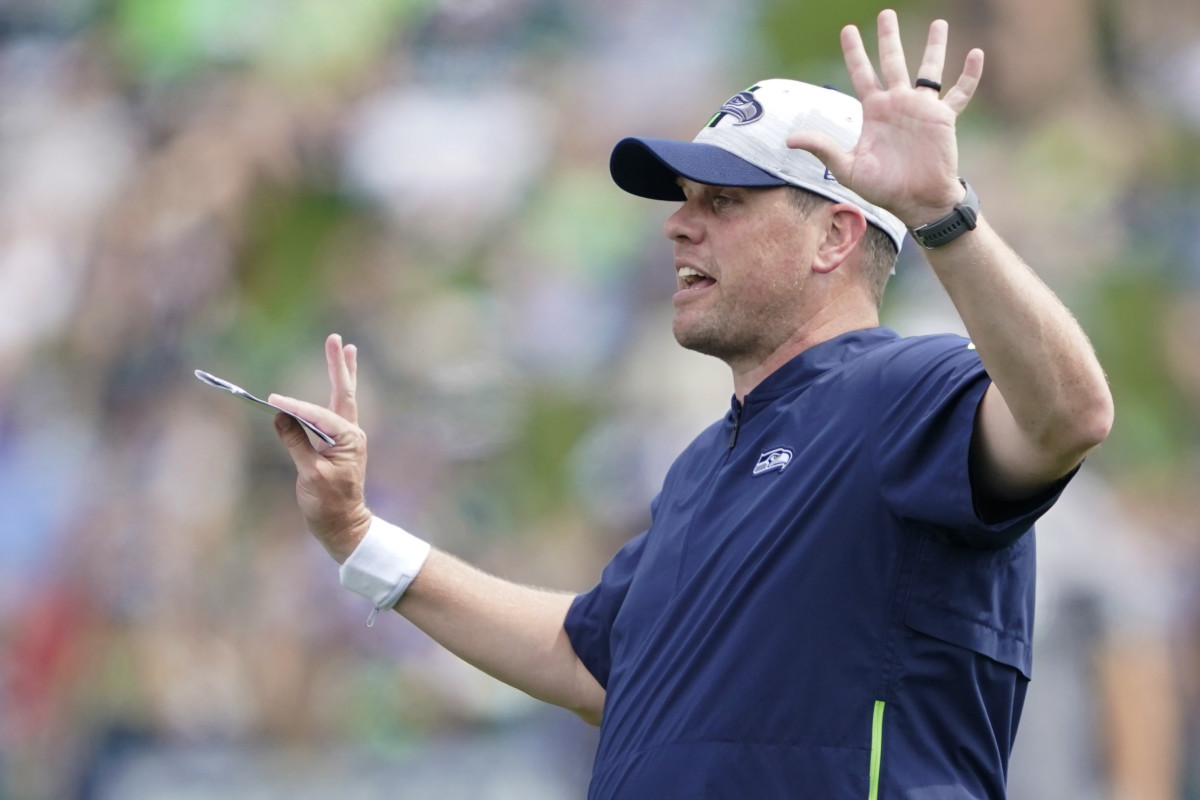Analysis: Why Seahawks Opted to Part Ways With Line Coach Mike Solari
Just 48 hours before Super Bowl LVI kicks off at SoFi Stadium, the Seahawks made a trio of moves with their coaching staff, including throwing a somewhat unexpected curveball by parting ways with offensive line coach Mike Solari.
Solari, 67, joined coach Pete Carroll's staff prior to the 2018 season as a replacement for Tom Cable. Seattle made the postseason in each of his first three years with the team and by all measures, the offensive line improved during that span, transforming into a respectable group after years of being viewed as an Achilles heel for the franchise.
With that said, despite Solari's efforts, the Seahawks took a step in the wrong direction when it comes to protecting quarterback Russell Wilson in 2021. With improving the offensive line once again a top priority heading into a critical offseason, the team and coach reached a mutual decision it was time for a split. Though a replacement has yet to be officially announced, run game coordinator Andy Dickerson is expected to take over as Solari's successor.
Why did Seattle decide to make this move now? And what does it mean for the team's future offensively? Here are the three primary reasons why the organization made a sound decision making a change:
Pass protection for Russell Wilson simply didn't improve enough

Considering the mess he inherited replacing Cable, Solari deserves a ton of credit for the immediate improvement Seattle made in pass protection. Per ESPN's Pass Block Win Rate metric, which accounts for the percentage of the time offensive linemen sustain their blocks in pass protection for 2.5 seconds or longer, the team finished third overall out of 32 teams (67.4 percent) in his first season at the helm in 2018.
Interestingly, considering Wilson's public remarks about getting hit too much last offseason that spawned months of trade rumors, the Seahawks finished ninth (61.9 percent) in the NFL in Pass Block Win Rate in 2020. Aside from a dreadful 28th overall finish in 2019, Solari's group finished in the top 15 in each of his three other seasons and ranked 10th overall (60.6 percent) during his four-year tenure.
But Pro Football Focus never graded Seattle's offensive line near as favorably in pass protection. Using different evaluation methods, Solari's unit never finished higher than 18th on PFF's team pass blocking grades and scored poorly with a 55.6 overall grade in 2021, which ranked 25th in the league. They were even worse in 2019, scoring 30th out of 32 teams in pass blocking grade.
According to Pro Football Focus, the Seahawks were particularly dreadful protecting Wilson and Geno Smith on third down last season. They ranked dead last in the NFL allowing a sack on 15 percent of their third down plays last season. They also ranked last among 32 teams yielding pressure on 49.4 percent of drop backs. Those numbers looked eerily similar in the 14 games Wilson started, with the line allowing a 13.1 percent sack rate and 49.4 percent pressure rate on drop backs.
While Solari wasn't always dealt the best hand in terms of personnel and blocking for a mobile improvisation wizard like Wilson isn't an easy task, Seattle made significant investments on its offensive line through trades, free agency, and the draft with improving pass protection as the top priority. At the end of the day, the on-field results never quite matched expectations.
Despite a strong finish to the 2021 season, Seattle's run blocking plateaued

When Carroll dismissed Cable after the 2017 season, he also jettisoned offensive coordinator Darrell Bevell in favor of Brian Schottenheimer aiming to reinvigorate one of the NFL's worst run games. In the season prior, Seattle didn't have a single running back with more than 240 rushing yards and only finished 25th in the league in rushing yards because Wilson ran for 586 on his own accord.
Solari arrived in the Pacific Northwest with a sterling reputation for building strong run blocking units dating back to earlier stops with the Chiefs, 49ers, and several other teams. With Schottenheimer at the controls, the Seahawks achieved their goal of getting their rushing attack humming again behind a front line headlined by mauling guard D.J. Fluker and tackle Duane Brown, leading the league with 2,560 yards and scoring the fifth-most touchdowns (15) on the ground.
Interestingly, Pro Football Focus didn't think highly of Seattle's run blocking, scoring Solari's crew as 19th-best in that department with a 62.4 grade. They seemed to attribute their overall success more towards the running backs with Chris Carson, Rashaad Penny, and Mike Davis all producing at least 289 rushing yards after contact and forcing a combined 72 missed tackles.
This trend continued into 2019, as the Seahawks finished fourth in the NFL with 2,200 rushing yards and the line again finished in the middle of the pack in PFF's rankings with a 59.9 grade, which ranked 17th. Eclipsing 1,000 yards for the second straight season, Carson was credited with more than 1,000 yards after contact and a whopping 62 missed tackles. Penny came on late before an ACL injury ended his season, averaging more than three yards after contact per carry in a reserve role.
In 2020, Seattle's line took a reasonable step forward with the additions of guard Damien Lewis and tackle Brandon Shell along with Ethan Pocic shifting into the starting lineup at center. Though they dipped down to 12th in rushing yards and didn't have a single rusher with more than 700 yards, they still finished sixth in yards per carry and were one of the more efficient running teams in the league. This earned Solari's unit a strong 72.7 grade from PFF, which ranked 10th overall.
Unfortunately, even with veteran guard Gabe Jackson coming over from the Raiders via trade, the Seahawks regressed in 2021. Injuries to Carson, Penny, and Alex Collins played a role as the team played musical chairs in the backfield for much of the year, but blocking up front wasn't good either, as illustrated by their 17th-ranked 67.4 grade from PFF. Penny exploded for nearly 700 yards in the final five games behind an improving line down the stretch, but the back did his part amassing those numbers, breaking 27 tackles and averaging north of 4.5 yards after contact per carry.
Looking at the numbers holistically, the Seahawks were consistently average in the run blocking department under Solari's tutelage. Outstanding play at the running back position as well as Wilson's legs elevated the team's rushing yardage totals more than blocking by the offensive line did and considering the investments made by the front office, the group didn't quite perform up to standard and couldn't quite get over the hump of mediocrity.
Schematically, Solari fit like a square peg in a round hole in Shane Waldron's offense

If it boiled down simply to the aforementioned numbers, Solari probably did not deserve to get canned. Pass protection undoubtedly improved under his watch and the Seahawks finished in the top 10 in rushing yards per attempt in all four seasons he served as offensive line coach. He's a great instructor who players respect and want to learn from.
But as soon as Seattle decided to fire Schottenheimer and replace him with Waldron, it was difficult to envision him and Solari being able to co-exist due to vastly different visions in regards to offensive philosophy, particularly in the run game. Solari has long subscribed to the downhill, gap-oriented run scheme, preferring bigger bodied blockers who can maul defenders at the point of attack. Waldron, on the other hand, wanted to incorporate a scheme built largely around pure zone concepts.
Making the situation more awkward, the Seahawks hired Dickerson, who had previously served as the Rams assistant offensive line coach, as run game coordinator. Having coached with Waldron for a number of years and sharing similar schematic ideology, he was an obvious replacement option for Solari, who had to see the writing on the wall.
After working as a passing game coordinator under McVay in Los Angeles, Waldron attempted to blend his system with some of the concepts used under Bevell and Schottenheimer last summer. Complicating those matters further as a first-time play caller, even with Dickerson being involved as the team's run game coordinator, he wasn't necessarily able to streamline his scheme because of Solari's presence remaining on the staff as line coach.
Truth be told, Waldron and Solari didn't have any grapples with one another and the two coaches were able to make the situation work in the short-term. This couldn't have been a simple decision for Carroll to make. But there's no question it was the right one, as Waldron will have a much easier time getting the most out of his system with Dickerson as the line coach, helping keep everyone on the same page and ensuring they are able to construct the line how they see fit moving forward.
